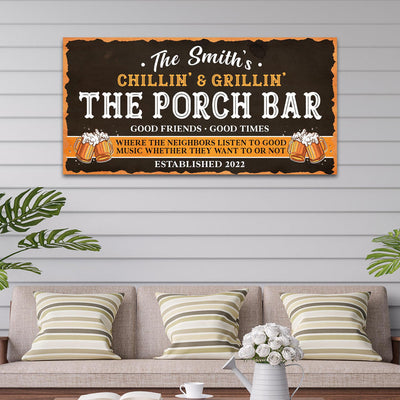Decorating your home is a personal expression of your style and taste. One aspect of home decor that often goes overlooked but holds immense potential is wall art placement. The strategic arrangement of wall art can transform a plain wall into a captivating focal point, elevating the overall ambiance of your living space. In this step-by-step guide, we will unlock the power of wall art placement, revealing the secrets to creating a visually stunning and harmonious environment.
Assess Your Space

White Gold Texture Abstract Canvas Wall Art
Before diving into the world of wall art placement, it's essential to assess your space thoroughly. This initial step sets the foundation for creating a harmonious and visually appealing arrangement. Start by examining the size, layout, and existing elements of the room. Consider the color scheme, furniture arrangement, and architectural features that may impact your wall art decisions.
Take measurements of the walls you intend to adorn with artwork. This information will help you determine the appropriate sizing and placement of the pieces. Analyze the available wall space and identify any potential obstacles such as windows, doors, or electrical outlets.
Additionally, pay attention to the natural lighting conditions in the room. The amount of sunlight and its direction can influence the choice of artwork and its positioning. Rooms with ample natural light may benefit from vibrant and colorful pieces, while dimly lit areas may require artwork that adds brightness and visual interest.
By carefully assessing your space, you lay the groundwork for selecting the right wall art and ensuring a cohesive and balanced overall aesthetic.
Define Your Style and Theme
Defining your style and theme is a crucial step in unlocking the power of wall art placement. It sets the foundation for creating a cohesive and visually appealing environment in your home. Start by exploring your personal preferences and inspirations. Consider the overall vibe you want to achieve - whether it's modern, minimalist, traditional, bohemian, or eclectic.
Take a look at your existing decor and architectural elements in the room. Identify any recurring patterns, colors, or textures that you're drawn to. This will help you establish a cohesive style that harmonizes with the overall design. Additionally, consider the purpose of the room and the emotions you want to evoke. Are you aiming for a serene and calming atmosphere in the bedroom or a vibrant and energizing space in the living room?
Once you've defined your style, choose a theme that aligns with it. It could be nature-inspired, abstract, vintage, or any other concept that resonates with you. This theme will guide your selection of wall art and ensure a unified look throughout the space.
Remember, your style and theme are expressions of your personality, so trust your instincts and let your creativity shine through.
Choose the Right Art Pieces

Pet Snapshot Sign | Customizable Canvas
Selecting the perfect art pieces for your walls is a crucial step in unlocking the power of wall art placement. When choosing art, several factors come into play to ensure a harmonious and visually appealing display.
First and foremost, consider the size of the artwork. Larger rooms can accommodate substantial statement pieces that command attention and fill the space. On the other hand, smaller rooms may benefit from a collection of smaller artworks or a carefully curated gallery wall arrangement.
Color and subject matter also play a significant role. Consider the existing color scheme of the room and choose artwork that complements or contrasts with it effectively. The subject matter of the artwork should resonate with your personal taste and align with the overall theme or style of the space.
Additionally, pay attention to the medium of the artwork. Paintings, photographs, prints, or mixed media pieces each have their own unique aesthetic and impact. Choose a medium that speaks to you and enhances the desired atmosphere of the room.
By carefully selecting the right art pieces, you can create a visually stunning display that reflects your style, evokes emotions, and becomes the focal point of your space.
Establish a Focal Point
An effective wall art placement often revolves around creating a focal point. Identify a prominent wall or area where you want to draw attention. This could be above a fireplace, behind a sofa, or at the end of a hallway. By establishing a focal point, you create a visual anchor that guides the eye and sets the tone for the entire space.
Consider Proportions and Placement
Once you have chosen your art pieces and established a focal point, consider the proportions and placement. Proper scaling is essential to maintain visual balance. For instance, a large painting might overpower a small wall, while a tiny artwork could get lost on a vast expanse. Experiment with different arrangements, such as centering, asymmetry, or layering, to find the perfect balance that complements the room's dimensions.
Harness the Power of Lighting

Windmill Scenery Canvas Wall Art VII
Proper lighting can make a significant difference in the way wall art is showcased and perceived. When it comes to wall art placement, understanding how to harness the power of lighting is crucial. Lighting not only illuminates the artwork but also creates a specific ambiance and enhances the overall visual impact.
Natural light is a valuable asset for showcasing wall art. Position your art pieces in areas that receive ample natural light during the day. This allows the colors to come alive and adds a sense of vibrancy to the artwork. However, be cautious of direct sunlight, as it can fade and damage delicate pieces over time. Consider using sheer curtains or UV-protective film on windows to protect your art while still benefiting from natural light.
In addition to natural light, artificial lighting plays a vital role in highlighting and accentuating your wall art. Utilize track lights, picture lights, or adjustable spotlights to direct focused illumination onto specific art pieces. This helps create a dramatic effect and draws attention to the artwork as a focal point in the room.
For a more subtle and ambient lighting approach, consider incorporating wall sconces or wall-mounted fixtures with diffused light. This soft, indirect lighting casts a gentle glow over the artwork, creating a warm and inviting atmosphere in the space.
Experiment with different lighting techniques to achieve the desired effect. For instance, backlighting can create a halo effect around the art, adding depth and intrigue. Adjustable lighting fixtures allow you to change the intensity and angle of the light, providing versatility in showcasing different art pieces.
Create Visual Flow
To unlock the full potential of your wall art placement, create visual flow throughout the room. Connect the elements by incorporating complementary colors, themes, or styles. Use furniture arrangements, rugs, and other decor items to guide the eye from one art piece to another. A well-curated and cohesive display will evoke a sense of unity and harmony in your space.
Rotate and Refresh
Don't be afraid to experiment and refresh your wall art displays periodically. As your taste evolves and seasons change, consider rotating your art pieces or introducing new additions. This allows you to breathe new life into your space and maintain a dynamic environment that reflects your evolving style.
Conclusion
Wall art placement is an art form in itself. By following this step-by-step guide, you can unlock the power of wall art and transform your living space into a captivating haven of self-expression. Remember to assess your space, define your style, choose the right art pieces, establish a focal point, consider proportions and placement, harness the power of lighting, create visual flow, and embrace the opportunity to rotate and refresh. Let your walls become a canvas for your creativity and personality, and watch as they come alive with beauty and inspiration.
FAQs
Q: How do I know which size of artwork is suitable for my wall?
A: When selecting artwork, consider the dimensions of your wall. Larger walls can accommodate bigger pieces or a gallery wall arrangement, while smaller walls might require smaller or medium-sized artwork. Always measure the wall space and consider the overall proportion and balance of the room.
Q: Should all the artwork in a room follow the same theme?
A: While it's not necessary for all the artwork in a room to follow the same theme, it's important to ensure cohesiveness and visual harmony. Consider using complementary colors, styles, or subjects to create a unified look that ties the pieces together.
Q: Can I mix different types of wall art, such as paintings and photographs?
A: Absolutely! Mixing different types of wall art, such as paintings, photographs, and prints, can add visual interest and depth to your displays. Experiment with various mediums and styles to create a unique and captivating arrangement.




